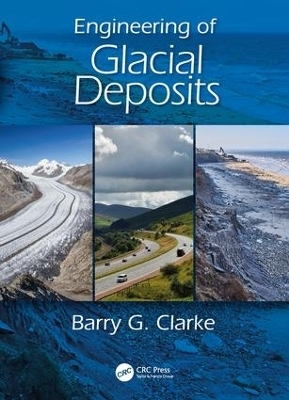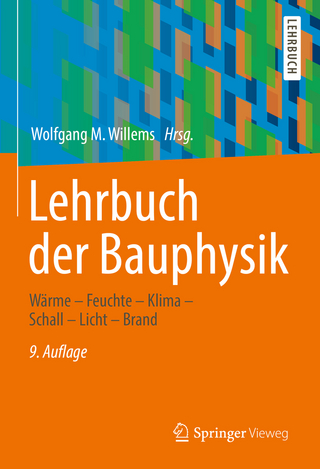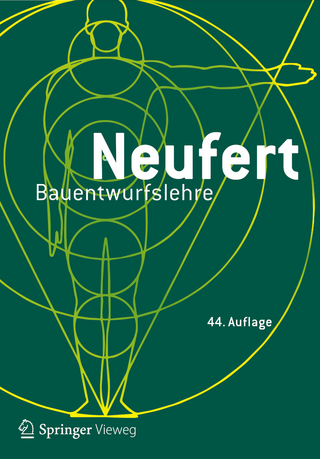
Engineering of Glacial Deposits
CRC Press (Verlag)
978-0-415-39865-7 (ISBN)
Glacial soils are composite soils with significant variations in composition and properties and are recognised as challenging soils to deal with. Understanding the environment in which they were formed and how this affects their behaviour are critical because they do not always conform to classic theories of soil mechanics.
This book is aimed at designers and contractors working in the construction and extractive industries to help them mitigate construction hazards on, with or in glacial deposits. These soils increase risks to critical infrastructure which, in the UK includes the majority of the road and rail network, coastal defences such as the fastest eroding coastline in Europe and most of the water supply reservoirs.
It brings together many years of experience of research into the behaviour of glacial deposits drawing upon published and unpublished case studies from industry. It draws on recent developments in understanding of the geological processes and the impact they have upon the engineering properties, construction processes and performance of geotechnical structures. Unlike other books on glaciation it brings together all the relevant disciplines in earth sciences and engineering to make it directly relevant to the construction industry.
Barry G. Clarke is Professor of Civil Engineering Geotechnics at the University of Leeds, UK and past president of the Institution of Civil Engineers.
Chapter 1 Introduction1.1 Introduction1.2 Glaciation1.3 Engineering glacial soils1.4 Glacial Soil 1.5 The evolution of glacial geology1.6 ‘The past is the key to the present‘1.7 ‘Glacial soils are the most variable of all soils’1.8 ‘We know more about the stars above us than the soils beneath our feet’ (Leonardo da Vinci, c 1600)1.9 ObservationsChapter 2 Glacial Geology2.1 Introduction2.2 Glacial Soils2.2.1 Facies2.2.2 Primary Deposits2.2.2.1 Subglacial Traction Till2.2.2.1.1 Glaciotectonite2.2.2.1.2 Deformation Till2.2.2.1.3 Lodgement Till2.2.2.1.4 Comminution Till2.2.2.2 Melt Out Till2.2.3 Secondary Deposits2.2.3.1 Glaciofluvial Deposits2.2.3.2 Glacial Sedimentation2.2.3.2.1 Glaciolacustrine Deposits2.2.3.2.2 Glaciomarine Deposits2.3 Glacial Landforms2.3.1 Subglacial Landforms Formed by Ice2.3.1.1 Drumlins2.3.1.2 Flutes2.3.1.3 Rogens (ribbed moraines)2.3.1.4 Erratics2.3.2 Subglacial Landforms Formed by Water 2.3.3 Ice Margin Moraines2.3.3.1 Push Moraines2.3.3.2 Dump Moraines2.3.3.3 Ablation Moraines2.3.4 Glaciofluvial Ice Marginal Landforms2.4 Glacial Land systems2.5 Glacial Dynamics2.5.1 Glacier Movement due to Substrate Deformation2.5.2 Sliding2.5.3 Friction and Sliding2.5.4 Erosion2.5.5 Deposition2.6 Subglacial Deformation2.6.1 Hydraulic Conditions2.6.2 Deformation2.6.3 Local Deformation2.7 ObservationsChapter 3 Ground Investigation 3.1 Introduction3.2 Design of a Ground Investigation3.3 Desk Study3.4 Site Reconnaissance 3.5 Preliminary Investigation3.6 The Main I
| Erscheint lt. Verlag | 12.6.2017 |
|---|---|
| Zusatzinfo | 196 Tables, black and white; 277 Line drawings, black and white |
| Verlagsort | London |
| Sprache | englisch |
| Maße | 178 x 254 mm |
| Gewicht | 1200 g |
| Themenwelt | Technik ► Architektur |
| Technik ► Bauwesen | |
| ISBN-10 | 0-415-39865-7 / 0415398657 |
| ISBN-13 | 978-0-415-39865-7 / 9780415398657 |
| Zustand | Neuware |
| Haben Sie eine Frage zum Produkt? |
aus dem Bereich


